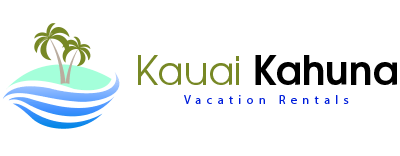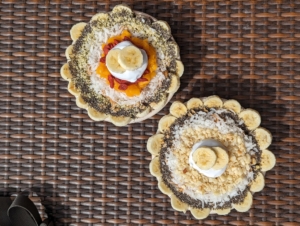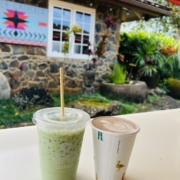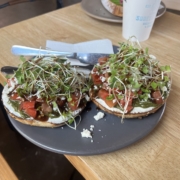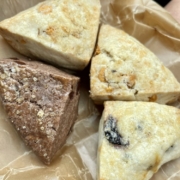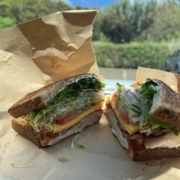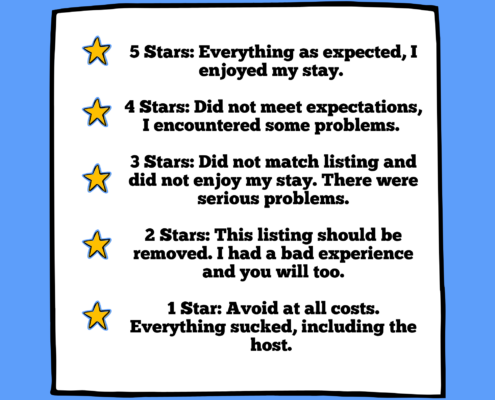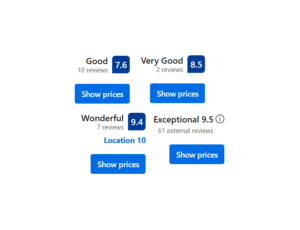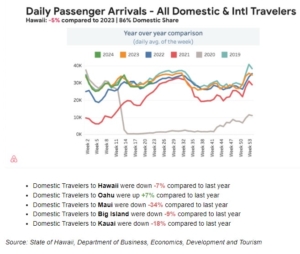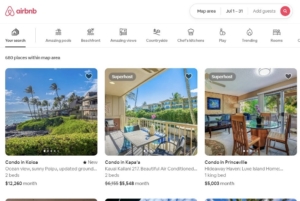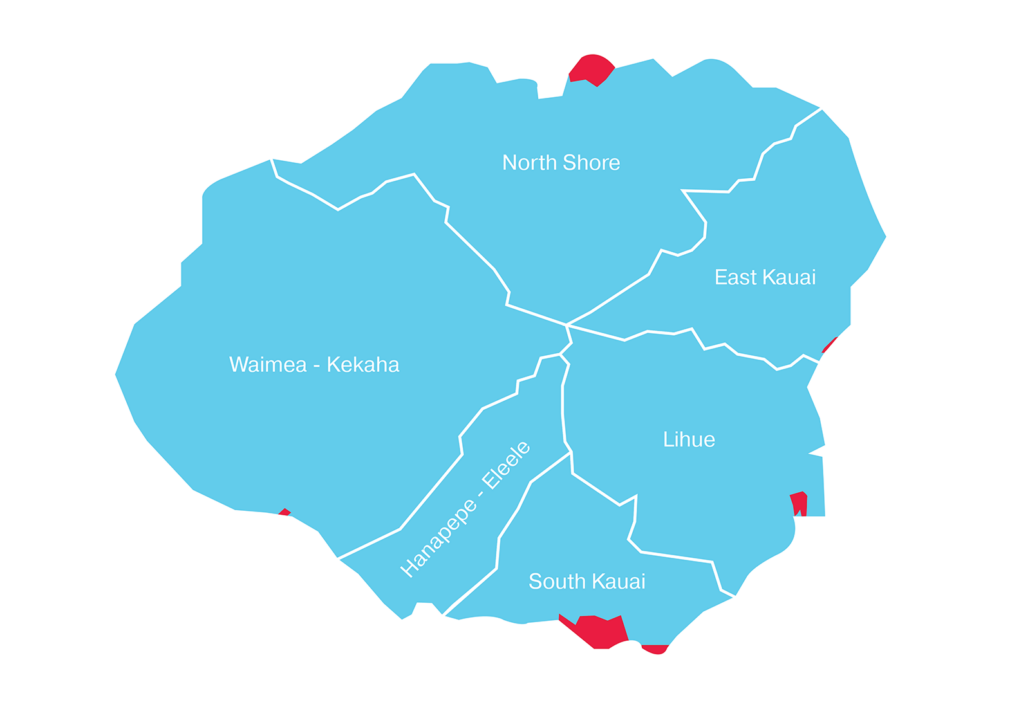Trail Rides, Tubing, and Everything In Between!
Even though August is fast approaching, summer is still in full swing on the island! And while beach days followed by shave ice are a vacation classic, there are plenty more outdoor activities you can take advantage of. Whether you’re a thrill-seeker who wants to zip around on an ATV, or a water-bug looking to float leisurely down the river, here are 7 exciting outdoor adventures to consider for your next trip to the Garden Isle!
Nā Pali Coast Boat Tours: Views, Waves, Wildlife
One of the most exciting, jaw-dropping experiences you can have on Kaua’i is taking a catamaran tour around the Nā Pali coast. Ordinarily, the verdant cliff faces and secret beaches are only visible to those brave enough to hike the 22 mile long Kalalau Trail. Thanks to locally owned and operated companies like Makana Charters, though, you can spend the day out on the water taking in the incredible sights of the Nā Pali coast. You’ll likely spot spinner dolphins and Hawaiian green sea turtles on your journey as well, and in the winter months you may be lucky enough to spot whales breaching and spouting. Full day boat tours include a complimentary deli lunch, or you can schedule a sunset cruise around the coast complete with dinner and drinks. Most boat tours launch from the South Shore, so if you’re staying up North be sure to budget your drive time accordingly.
Doors Off Helicopter Tours: Thrilling Heights and Cinematic Sights
Another fan-favorite activity on the island are doors-off helicopter tours. You’ll be able to catch aerial views of the entire island, including the Nā Pali Coast, and the red peaks, green valleys, and white waterfalls of Waimea Canyon. Movie lovers will recognize the sights of Waimea Canyon as the famous opening shot of the original Jurassic Park movie, though the dinosaurs have sadly been removed. Several companies on the island offer helicopter tours, like the family-owned Ali’i Kaua’i Helicopter Tours, and the established Island Helicopters Kaua’i. Tours typically launch from the airport in Lihu’e, which is easily accessed from the North or South shores!
Limahuli Gardens & Preserve: Cultural Preservation and Natural Splendor
If thrill-seeking isn’t quite your speed, and you’d rather immerse yourself in time-honored Hawaiian cultural practices and island botany, there’s no better place for you than the Limahuli Gardens and Preserve. Limahuli is an ahupua’a, or Hawaiian land division stretching from the mountaintop to the sea, and is still stewarded in the traditional ways of the ancient Hawaiian people. Here you’ll find vibrant and unique plants not found anywhere else in the world, nor anywhere else on the island, and the cultural backstory to go along with them all. Limahuli is a place steeped in history, and we love spending the day wandering the gardens, taking in the incredible ocean views, and soaking up the tropical sun.
Mountain Tubing: Gentle Waters, Natural Swimming Holes, Historic Sites
The perfect combination of relaxing and exciting, Kaua’i Backcountry Adventures offers a mountain tubing excursion that includes a picnic lunch and a cool dip in a natural swimming hole. After an exciting journey to the launch point in a 4×4, you’ll float along miles of canals and tunnels once used to irrigate the massive sugar crops of the Lihu’e Plantation. This is a great opportunity to soak up the awesome views of Kaua’i’s lush interior while catching some rays and enjoying the cool water flowing from the mountain. The Kaua’i Backcountry Adventures launch point is in Lihu’e, which is easily accessible from the North and South shores.
4×4 Off-Road Tours: Exciting Trails, Local Wildlife, Private Waterfalls
If you read about the mountain tubing excursion, and thought the 4×4 part of the adventure sounded like the most fun, then Kipu Ranch is the place for you! Both 4×4 off-road tours offered are 3 hours long, and take you across the 3,000 acres of the Kipu Cattle Ranch. You’ll stop and see sites from popular movies like Jurassic Park, Lilo and Stitch, and the Descendants, all while sharing the road with local wildlife like pigs, cattle, and peacocks, and learning about Hawaiian history along the way. Depending on the tour you select, you can also end your tour at a private waterfall, and cool off in the crisp swimming hole at the base. Both tours are an awesome way to explore Kaua’i’s lesser-known island interior, and the ranch is conveniently located just 20 minutes from the Lihu’e airport.
Biking the Kapa’a Bike Path: Scenic Views, Easy Beach Hopping, Great for the Whole Family!
If you’re visiting the island with kids, or if you just like to bike, we highly recommend heading to Hele on Kaua’i, renting some beach cruisers, and heading out on the Ke Ala Hele Makalae (Kapa’a Bike Path)! This 8 mile coastal bike and pedestrian path takes you alongside beautiful beaches like Keālia Beach (great for bodysurfing and boogie boarding) and Donkey Beach. You can cruise along, enjoy the ocean views, stop and enjoy a picnic lunch, and go for a swim in the Pacific. Hele on Kaua’i is conveniently situated just 30 seconds from the Ke Ala Hele Makalae, and offers rental options from 2 hours up to 1 week. At the end of your journey, you can head up into Kapa’a Town for shave ice or fresh fruit smoothies to cool off! Kapa’a and Hele on Kaua’i are located on the North Shore, so be sure to budget your travel time accordingly.
Waimea Canyon: Hiking Trails Galore, and the Most Incredible Views
We would be remiss if we didn’t recommend making the journey down South to visit Waimea Canyon and explore some of the hiking trails in Koke’e State Park. Known as the Grand Canyon of the Pacific, Waimea Canyon is an incredible sight: 10 miles long and up to 3,000 feet deep, the canyon is outlined by exposed basalt rock that has weathered to a deep and vibrant red color, giving the canyon its name (Waimea means “reddish waters” in Hawaiian. Located on the West Side of the island, you’ll find plenty of scenic outlooks to take in the sights of the Canyon, as well as plenty of hiking trails with varying difficulty levels. The Iliau Nature Loop (.3 miles, very easy), and the Canyon Trail (2 miles, moderate) are both great options for a quicker, less strenuous hike. The Iliau Loop is great for birding and examining native flora, while the Canyon Trail provides spectacular cliffside views of Waimea Canyon. There are three separate official lookout points along the road through Waimea Canyon, each one offering a different perspective on the marvel in front of you, but the first Waimea Canyon Lookout is by far the most popular. Waimea Canyon and Koke’e State Park are both located on the West Side, so be sure to set aside plenty of time to make the drive down.
As you can see, Kaua’i is an outdoors enthusiast’s dream! There are so many different ways to enjoy the temperate tropical weather and year-round sunshine beyond hanging out at the beach (though it’s always a great option!), and many of them expose you to parts of the island that would otherwise go unnoticed. Whether you’re a first time visitor to the island, or a repeat guest, we recommend picking something new off this list for your next vacation! If we missed any of your favorite activities, let us know and we’ll update our list for everyone to see.
